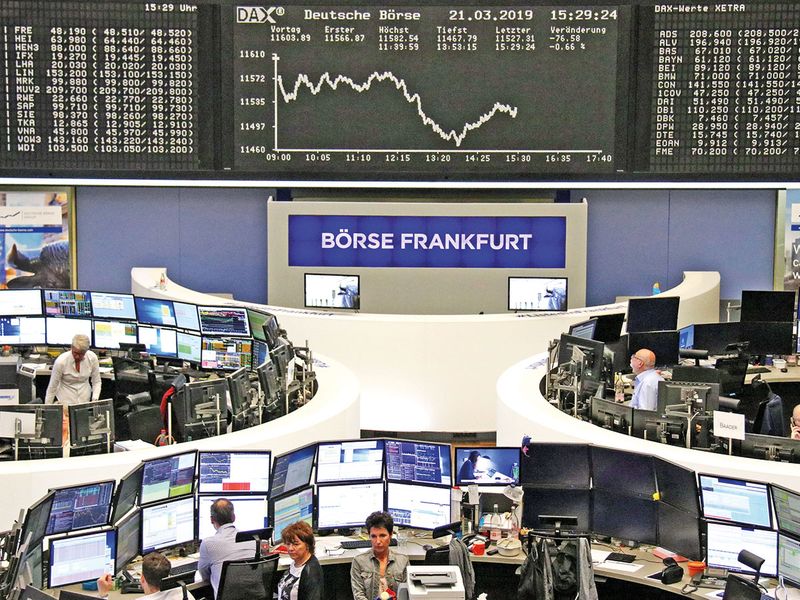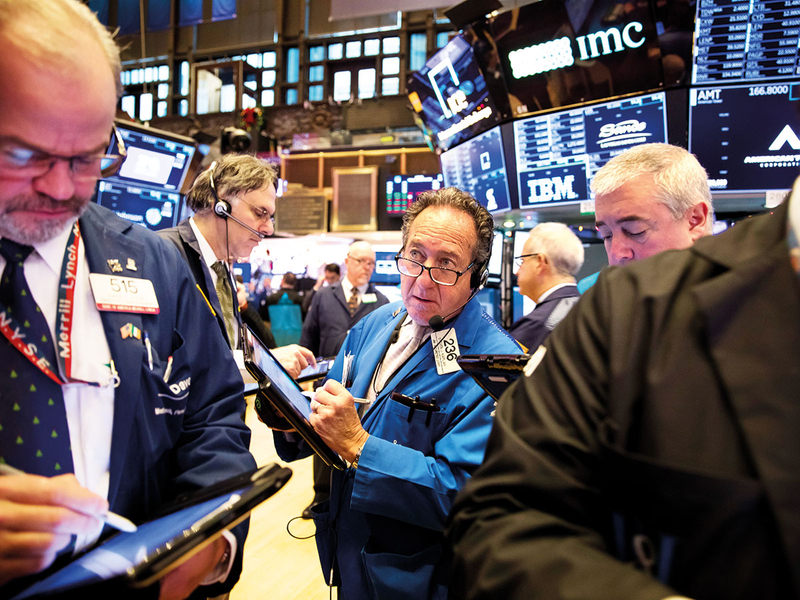
The go-to reaction of many investors to volatility is getting spooked and a rushed rethink of their investing strategies. Newbie investors are especially then tempted to pull out of the market altogether, wait out the period of uncertainty and dive back into the market only if volatility subsides.
But the reality is market volatility is inevitable. It's the nature of the markets to move up and down over the short-term. Trying to predict which direction the market will move next is extremely difficult.
If you’re an investor looking to pocket short-term gains, or a long-term investor, you need to know about market volatility.
In this article, we look to explore just that while studying different techniques on how you can take advantage of market volatility for favourable gains.
What causes market volatility?
Let’s first quickly brush through what volatility is and what drives it.
Some say volatile markets are caused by things like release of economic data or figures, company news, a recommendation from a well-known analyst, a popular initial public offering (IPO) or unexpected earnings results.
Others say volatility-driven investor reactions are caused by psychological forces. This indicates how that substantial price changes (volatility) result from a collective change of mind by the investing public.
Although there is no consensus on what causes volatility, because volatility exists, investors must develop ways to deal with it.
Through understanding volatility and its causes, investors can potentially take advantage of the investment opportunities that it provides to generate better long-term returns.

Taking the long-term view
Investors who focus on the long-term or following a ‘buy and hold’ strategy tend to be less concerned with volatility. Here are three reasons why having a long-term investment strategy is worth considering:
- It’s virtually impossible to predict exactly when the top or bottom of a market will be. When investors try to ‘time the market’, they run the risk of buying high and selling low. This bad timing can further exacerbate the losses during volatile times, which is why investors would typically be better off staying the course, than attempt to time things and not do it well.
- History shows that stock markets often correct after three downward waves. This means that investors that exit may miss the best recovery days and most attractive buying opportunities, which can have a significant impact on longer-term returns. Remaining invested when markets are volatile usually benefits you if you take a long term view.
- Quality companies with strong fundamentals generally do better when economic conditions slow down or market volatility increases. Investors may be better off to weather the storm, as these companies often come out even stronger, even though it takes a while for this to be reflected in the stock price.
The key thing to remember is that it’s normal for markets to move up and down, and volatility should not be the deciding factor on whether or not to exit your investment.
Tune out the noise
Investors are often advised to tune out the noise when trying to gain a longer-term perspective, multiple veteran investors have frequently reminded.
Numerous television stations, websites and social media channels are dedicated to reporting investment news 24 hours a day, seven days a week. What’s more, there are almost too many financial publications to count.
Investors are often advised to tune out the noise when trying to gain a longer-term perspective, multiple veteran investors have frequently reminded.

While the media provides a valuable service, they typically offer a very short-term outlook. To put your own investment plan in a longer-term perspective and bolster your confidence, you may want to look at how different types of portfolios have performed over time.
Now that we have briefly gone through how investors have historically gone about investing in a volatile market, let’s now see what are the different techniques or strategies certain investors use to make money in a volatile market.
Debunking myths
One mistaken myth about a buy-and-hold strategy is that holding a stock for 20 years is what will make you money. Long-term investing still requires homework because markets are driven by corporate fundamentals.
What this means is that if you find a company with a strong balance sheet and consistent earnings, short-term fluctuations won't affect the long-term value of the company.
In fact, periods of volatility could be a great time to buy if you believe a company is good for the long-term.
It has also repeatedly been told that "missing a few best days could cut your return by more than half". For the most part, this is true.
But on the other hand, missing few worst days will also increase your portfolio considerably and in some cases, you may want to make trades during volatile market conditions – a topic we will explore below.

Volatility can mean opportunity
Volatility is not always a bad thing, as it can sometimes provide entry points from which investors can take advantage.
Downward market volatility offers investors who believe markets will perform well in the long run to buy additional stocks in companies that they like at lower prices.
Volatility is not always a bad thing, as it can sometimes provide entry points from which investors can take advantage.
The process is the same when a stock rises quickly. Investors can take advantage of this by selling out, the proceeds of which can be invested in other areas that represent greater opportunity. Investing when markets are volatile, and valuations are more attractive, can give investors the potential to generate strong, long-term returns.
Trading amid volatility
The type of order you choose is very important when the markets aren't moving in their normal fashion.
A market order will always be executed, but in fast markets, you might be surprised at what price you get, which can be substantially different from the price that was quoted. (A market order is a buy or sell order to be executed immediately at the current market prices. It’s the simplest of order types.)
In a volatile market, the limit order – an order placed with a brokerage to buy or sell at a predetermined amount of shares, and at or better than a specified price – is your friend.
Limit orders may cost slightly more than market orders but are always a good idea to use because the price at which you will purchase or sell securities is set. On the downside, a limit order does not guarantee you an execution.

High dividend stocks
One of the best places to take cover in a volatile stock market is in high dividend stocks. The dividends themselves provide something of a cushion.
Even though the price of the underlying stock may fall, you’re still earning steady dividend income. But the income also helps to stabilize the price.
After all, in a market where capital appreciation is less certain, income becomes more important. Investors are naturally drawn to the reliability of dividend income, which can serve to minimise stock price declines.
Investing in value stocks
Value investing is associated with buying stocks that currently many analysts and investors do not pay attention to (out-of-favour).
They’re considered to be undervalued based on certain metrics that can include a price-to-earnings ratio lower than their industry-standard, below average price-to-book ratio, or an above average dividend yield.
- Price-to-earnings (P/E) ratio is probably the most common way to value a company, measuring its current share price relative to its earnings per share. If a company has a high P/E, investors are paying a higher price for the stock compared to its earnings, because of growth expectations in the future. If a company has a lower P/E, you get more earnings for your investment. This makes a low-P/E stock a good value, but it can also simply indicate that investors aren't very confident about the company's prospects. The average P/E has historically ranged from 13 to 15. For example, a company with a current P/E of 25, above the average, trades at 25 times earnings.
- Price-to-book (P/B) ratio has been favoured by value investors for decades and is widely used by market analysts. It is calculated by dividing a company's stock price by its book value per share, which is defined as its total assets minus any liabilities. Traditionally, any value under 1.0 is considered a good P/B value, indicating a potentially undervalued stock. However, value investors often consider stocks with a P/B value under 3.0.
- Dividend yield is the ratio of a company's annual dividend compared to its share price. A good dividend yield will vary with interest rates and general market conditions, but typically a yield of 4 to 6 per cent is considered quite good. A lower yield might not be enough justification for investors to buy a stock just for the dividend income.

Any of these may be the result of a recent bout of bad news that depressed a company’s stock value. For example, the company may have faced regulatory action, a major lawsuit, negative media attention, or a series of poor earnings.
Though the event that caused the drop in stock price may have passed, the price still hasn’t recovered. Investing in these companies can be one of the best long-term investment plays because the stock is cheap relative to its competitors.
Dollar-cost averaging
Most people are quick to agree that volatile markets may present buying opportunities for investors with a long-term horizon. But mustering the discipline to make purchases during a volatile market can be difficult. You can’t help wondering, “Is this really the right time to buy?”
Shorter term trading
Short-term trading involves taking a position that can last from seconds to several days. It is used as an alternative to the more traditional buy-and-hold strategy, in which you’d hold a position for weeks, months or even years.
Short-term trading strategies are a popular way to take advantage of smaller market movements when compared to traditional investments.
Short-term trading focuses mainly on price action, rather than the long-term fundamentals of an asset. This trading style attempts to profit from quick moves in market prices, and so seeks out market volatility around key economic data releases, company earnings and political events.
There are a variety of different styles that short-term traders can choose from, depending on their time constraints and risk appetite. The popular ones include – Scalping, Day trading and Swing trading.
• Scalping: This involves making profit from small price changes by opening positions that can last anywhere between seconds and minutes – but usually not longer.
A scalper will aim to make small profits as frequently as possible by entering a trade and exiting it as soon as the market moves in their favour – ‘scalping’ profits off the top of a market trend.
A scalper will aim to make small profits as frequently as possible by entering a trade and exiting it as soon as the market moves in their favour – ‘scalping’ profits off the top of a market trend.
Scalping is incredibly time intensive and is not for the part-time trader.
For those looking to trade over the short term, this style can be lucrative but also risky. It is important to be aware of the costs you will incur for opening and closing trades, and to ensure these costs do not erode your profits.
• Day trading: Day traders buy and sell assets within a single trading day, often to avoid paying overnight costs. This is classified as a short-term trading style because it seeks to take advantage of small market movements by trading frequently throughout the day.
• Swing trading: Swing traders focus on taking a position within a larger move, which could last several days or weeks. It is the longest style of short-term trading, as it takes advantage of medium-term movements too.
Swing traders will attempt to spot a trend and capitalise on the rises and falls within the overall price movement. They will often rely on technical analysis to identify the entry and exit points for each trade.
Swing trading is still classed as a short-term trading style, but there is no specific timeframe that constrains it. So, in theory, it could also classify as a long-term trading style as the trend could last longer than a couple of weeks.

Profiting from short selling
If you have reasons to believe that a stock is going to go down, you can make money by short selling that stock.
Short selling (also known as going short or shorting the market) means that you’re selling it to the market first and then attempting to buy it later at a lower price.
Sounds complicated, let’s break it down.
If the stock does drop after selling, the short seller buys it back at a lower price and returns it to the lender. It’s exactly the same principle of “buy low, sell high,” just in the reverse order — you sell high and then buy low.
You may be wondering, how can you sell a stock before you buy it? It’s actually not as difficult as it seems. To sell a stock that you don’t own, for example, you must first borrow it.
Your broker facilitates this process and may let you borrow a stock owned by another trader or, less frequently, owned by the broker himself.
When you’re ready to exit your short position, you cover the position by buying back the stock you had shorted. In other words, selling before you buy really means you’re borrowing the stock before you short sell it. An example (below) should make the concept simpler and clear any doubts on the topic.
Short selling comes involves amplified risk. When an investor buys a stock (or goes long), they stand to lose only the money that they have invested. However, when an investor short sells, they can theoretically lose an infinite amount of money because a stock's price can keep rising forever.

A week later, Stock A’s price falls to Dh90 per share after the company announces annual earnings. The investor decides to close the short position, so he buys back 100 shares of Stock A from the open market at a price of Dh90 per share and returns those shares to the broker; this is a buy-to-cover order. Therefore, the investor makes a profit of Dh10 per share which is a total of Dh1,000 for the whole transaction not including commissions and interest.
However, if the stock price increases to Dh110 per share and the investor decides to close the short position, he will need to buy-to-cover the 100 shares from the open market at the current price of Dh110 per share. The loss for this short sale transaction will be Dh10 per share which amounts to a total loss of $1000 (excluding commissions and interest), since the stock shares were bought back at a higher price.


